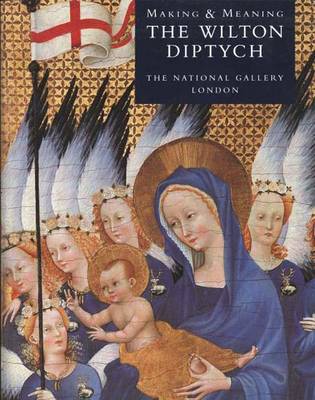Making & meaning
2 total works
the Wilton Diptych
by Dillian Gordon, Caroline M. Barron, Ashok Roy, and Martin Wyld
Published 24 June 1994
The Wilton Diptych is one of the most beautiful, yet most enigmatic, paintings ever made. The intricacy of detail, the refinement and sublety of its varied techniques and decorative effects, the lushness of its colours and the exquisite tooling of the gold, all in a remarkable state of preservation, are unmatched in any contemporary English or European panel painting. Superficially the imagery is straightforward. It shows Richard II (King of England 1377-99) being presented to the Virgin and Child by two royal English saints, Edward the Confessor and Edmund, and Richard's patron saint, John the Baptist. On the exterior are the king's personal emblem of the white hart and his coat of arms. Thereafter the diptych remains an enigma: no one knows precisely when, why, or by whom it was painted. The author explores new evidence which helps to clarify the diptych's meaning. As a result of recent investigations by the Gallery's Scientific and Conservation Departments, valuable technical information is presented about the materials used in its painting, which has a bearing on both its origin and serves to emphasize the extraordinary craftsmanship of the diptych.
Careful cleaning and restoration of Holbein's The Ambassadors has made it possible for an art historian, conservator and scientist at the National Gallery to collaborate on a study of the making and the meaning of the painting. This book presents their discussion and interpretation.

